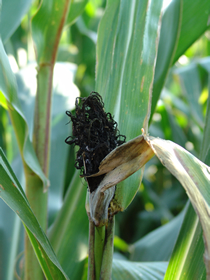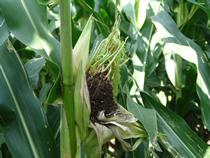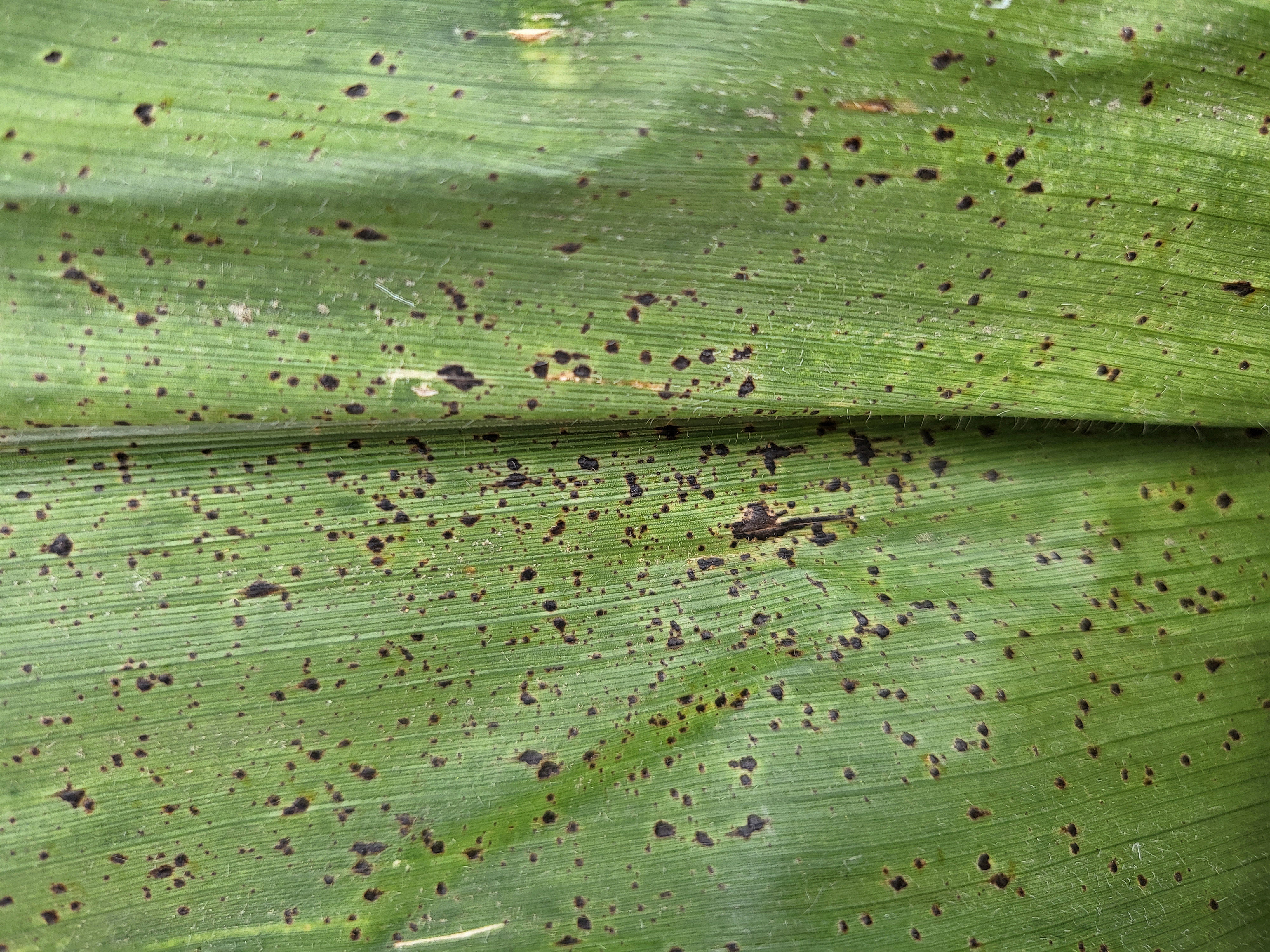By Tamra Jackson, Extension Plant Pathologist
Pathogen
Head smut of corn is caused by the fungus Sphacelotheca reiliana and occurs in some fields in Nebraska. Yield loss due to the disease is variable and directly dependent upon the incidence of disease. But the disease can also impact marketability because it is subject to export restrictions in some countries. Head smut can be confused with another smut disease of corn that occurs more commonly in Nebraska, called common smut. For more information on common smut, consult the PDC article dedicated to that disease.
Symptoms
Ears and tassels may be replaced with smut sori filled with teliospores. Infected plants may develop bizarre symptoms on either the ear or the tassel, including the production of wire-like extensions of the vascular bundles in the tassel (pictured) or finger-like proliferations in the ear (pictured). Ears of infected plants may be recognized by their teardrop-shape and lack of silks where the husks are filled with teliospores (pictured).




Epidemiology
The fungus survives as thick-walled black teliospores, but unlike common smut, the teliospores produced by the head smut fungus are not contained within fleshy galls. And, in contrast to common smut, plants are systemically infected as seedlings, though infection is only obvious in flowering plants. Large amounts of teliospores are produced on the ear and sometimes the tassel of infected plants, both of which are usually sterile, and thus yield loss is directly related to the percent incidence of the disease. The fungus can also be seed borne, which is not considered to be an important source of infection, but can be a point source for introduction into a field.
Management
Hybrids vary in their susceptibility/resistance to the fungus that causes head smut. Since infection occurs in seedlings, seed treatment fungicides may be used in areas with a high incidence of the disease. Planting date may also be altered in some areas, planting earlier to avoid the optimal temperatures for teliospores germination.








